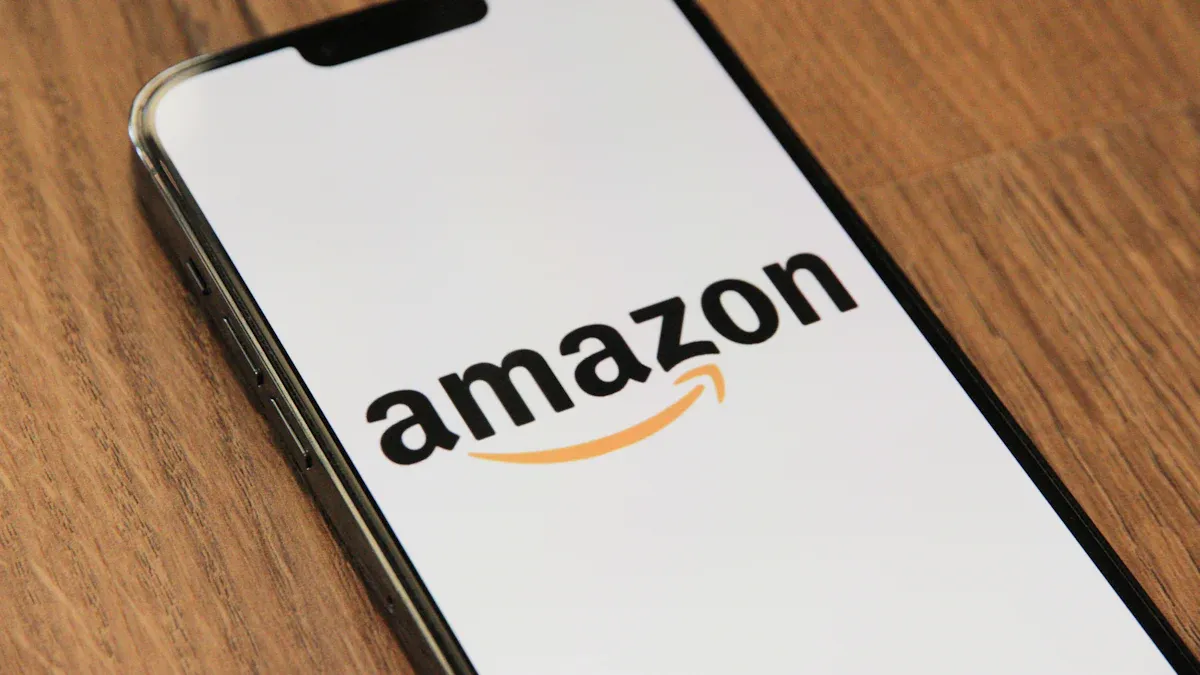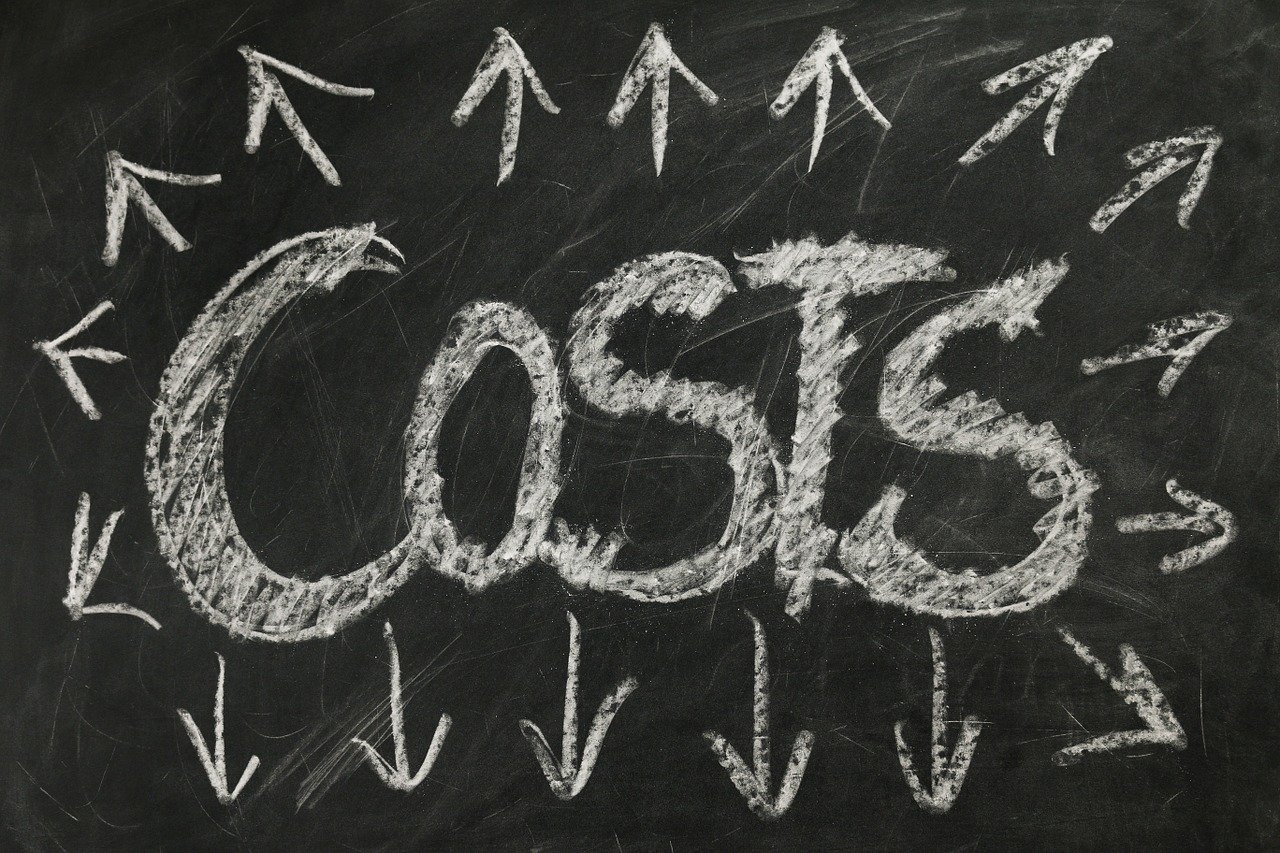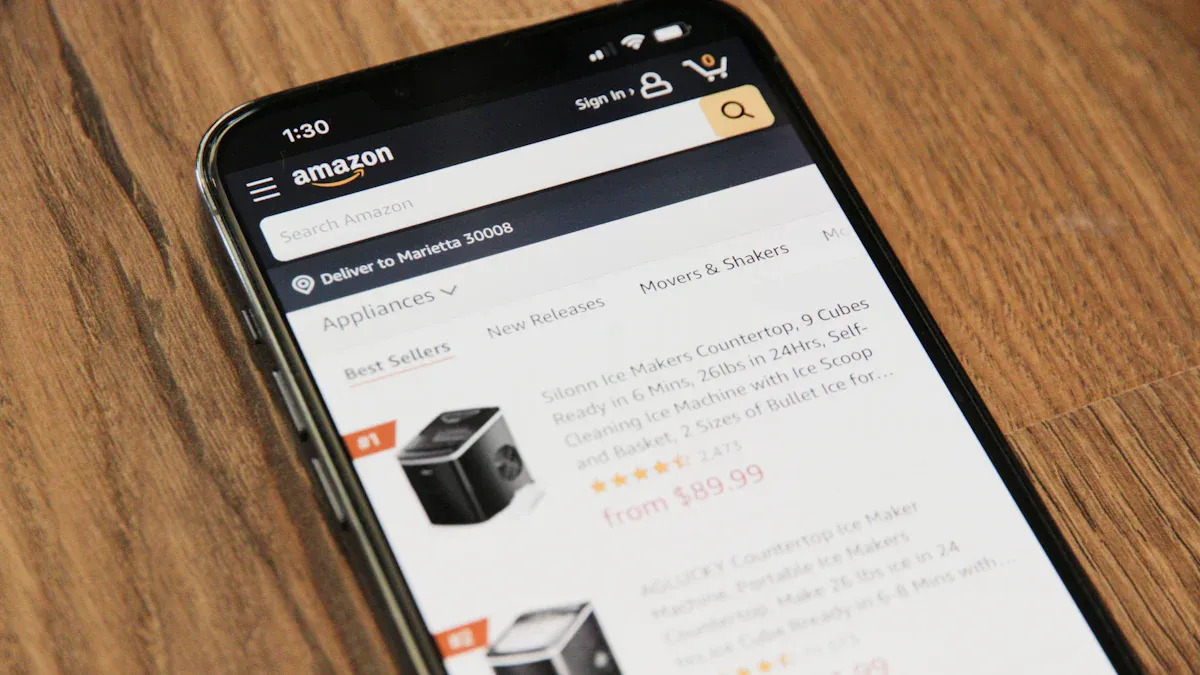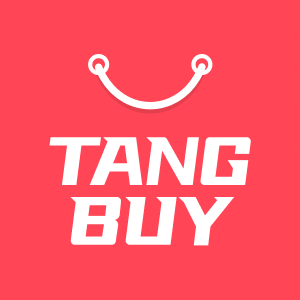Amazon or eBay Making the Right Choice for Your Online Business in 2025

You want to know if Amazon or eBay will work better for your business. The answer depends on what you sell, how you operate, and what you want to achieve. Amazon vs. eBay is not a one-size-fits-all decision. Think about what matters most to you: fees, how easy it is to use, the right fit for your products, shipping options, customer reach, or risk. By looking at your needs, you can find the best match.
Key Takeaways
Amazon is good for sellers with new, popular products. It helps people who want things done for them and want many buyers.
eBay is better for selling used, old, or rare things. It lets sellers have more control and change their listings easily.
Amazon has many fees like subscription and fulfillment fees. eBay has easier fees, mostly just a final value fee.
Fulfillment by Amazon (FBA) saves time and can help you sell more. But it costs more money. eBay sellers must ship items themselves.
Amazon buyers want fast shipping and easy returns. eBay buyers want good deals and trust sellers with good reputations.
Amazon gives sellers strong protections and smart tools. eBay gives rewards to honest sellers with good feedback.
Picking the best platform depends on your products and goals. You should also think about fees and how much control you want.
Many sellers use both Amazon and eBay. This helps them find more buyers and grow their business in 2025.
Quick Comparison

Amazon vs. eBay
When you compare Amazon and eBay, you see two big online selling sites. They do things in different ways. You might ask which one is better for your business. Here is a table that shows the main features side by side:
Category | Amazon | eBay |
|---|---|---|
Referral, fulfillment, subscription, advertising, storage | Final value, optional promoted listing, mostly free to list | |
Fulfillment | FBA (Amazon handles storage, packing, shipping) or FBM (you ship) | You handle all shipping and packing |
Product Types | Focus on new, brand-name, and mass-market items | New, used, vintage, collectibles, and auctions |
Customer Base | 2.5 billion monthly visits, strong Prime loyalty, global reach | 885 million monthly visits, diverse buyers, strong for unique items |
Professional plans, advanced ads, complex fees, high competition | Seller Hub dashboard, easy listing, more flexibility, less competition |
Amazon has a huge number of visitors each month. eBay has fewer people, but you can sell more types of things. If you have used or rare items, eBay is a good choice. With FBA, Amazon can store and ship your products, but you pay extra. On eBay, you do all the shipping yourself. This can save money, but it takes more time.
Key Differences
Let’s look at what makes these two different:
Fees: Amazon charges for many things like selling, storing, and shipping. eBay lets you list most items for free, but you pay a fee when you sell.
Fulfillment: Amazon can do the hard work with FBA. On eBay, you pack and ship everything yourself.
Product Types: Amazon likes new and branded products. eBay is great for used, vintage, or collectible things. You can also run auctions on eBay.
Customer Base: Amazon shoppers want fast shipping and trust Prime. eBay buyers look for deals and rare items.
Seller Experience: Amazon gives you tools for big business, but there are more rules and fees. eBay is simple and flexible, so you have more control.
Tip: If you want to sell lots of new products, Amazon could be best. If you have special, used, or collectible things, eBay might be better.
Choosing Amazon or eBay depends on your business needs. Do you want to reach more people and let someone else ship your items? Or do you want more control and lower fees? Think about your products and goals. This quick comparison can help you pick the right platform.
Platform Overview
Amazon Basics
When you start selling on Amazon, you get access to a huge marketplace and a lot of helpful tools. Amazon makes things easier for you by offering services that handle the hard parts of selling online. Here’s how Amazon helps you run your business smoothly:
You can use Fulfillment by Amazon (FBA) to let Amazon store, pick, pack, and ship your products. This saves you time and can cut your costs by up to 70% compared to doing it all yourself.
Amazon offers extra services like Buy with Prime, Multi-Channel Fulfillment, and Amazon Shipping. These tools help you reach more customers and make your supply chain work better. For example, Buy with Prime can boost your order conversion rate by about 25%.
If you want to automate your business, Amazon gives you access to well-documented APIs. You or your developer can connect your systems and make things run faster.
Amazon uses robotics and AI in their warehouses. This means your orders get processed quickly and accurately, with less work for you.
You can also use Amazon’s AI tools, like SageMaker and Bedrock, to make your business smarter and more efficient.
Amazon lets you pick the services you need. You can build your business your way and scale up when you’re ready.
Tip: If you want to focus on growing your business instead of packing boxes, Amazon’s automation and support can help you save time and money.
eBay Basics
eBay works differently from Amazon. You have more control over your listings and how you sell. eBay is great if you want to sell new, used, or even rare items. Here’s a quick look at how eBay works for sellers:
What It Means for You | How It Impacts Sales | |
|---|---|---|
Seller frequency | How often you list items | High-volume sellers use 'Buy it Now' and low prices for more sales |
Seller reputation | Your feedback score and history | A good reputation builds trust and helps you sell more |
Auction length | How long your auction runs | Different lengths work for different sellers |
Starting price | The price you set at the beginning | Lower prices with 'Buy it Now' can attract more buyers |
Product information | How much detail you give in your listings | More details mean more trust and better results |
'Buy it Now' option | Lets buyers purchase right away | High-volume sellers always use this for faster sales |
On eBay, your reputation matters a lot. Buyers look at your feedback before they buy. If you have a strong history of good sales, buyers trust you more. This trust leads to better auction results and more sales. eBay’s seller policies reward you for being honest and providing lots of details in your listings. You can choose how you want to sell—by auction or fixed price—and set your own rules.
Note: eBay gives you the freedom to run your shop your way. If you like flexibility and want to build trust with buyers, eBay is a strong choice.
When you look at Amazon vs. eBay, you see two very different ways to sell online. Amazon focuses on automation and reach, while eBay gives you more control and rewards a good reputation.
Fees and Profit
Amazon Costs
When you sell on Amazon, you pay several types of fees. You start with a monthly subscription fee if you choose a Professional account. This fee is about $39.99 per month. If you use an Individual account, you pay $0.99 for each item you sell. Amazon also charges a referral fee for every sale. This fee usually ranges from 8% to 15% of the product price, depending on the category.
If you use Fulfillment by Amazon (FBA), you pay extra for storage and shipping. These fees depend on the size and weight of your products. You might also pay for optional services like advertising or premium placement. Here’s a quick look at the main Amazon fees:
Fee Type | Amount/Range |
|---|---|
Subscription | $39.99/month (Pro) or $0.99/item (Indiv.) |
Referral Fee | 8%–15% of sale price |
FBA Fulfillment | Varies by size/weight |
Storage | Monthly, based on space used |
Advertising | Optional, pay-per-click |
Tip: Always check the latest fee schedule on Amazon. Fees can change each year.
eBay Costs
eBay uses a different fee structure. You can list most items for free, up to a certain number each month. After that, you pay a small insertion fee for each new listing. When your item sells, eBay takes a final value fee. This fee is usually about 10% to 15% of the total sale, including shipping.
You can also pay for optional upgrades, like promoted listings or bold titles. These extras help your items stand out but add to your costs. Here’s a simple breakdown of eBay’s main fees:
Insertion Fee: Free for most sellers (limits apply), then about $0.30 per extra listing.
Final Value Fee: 10%–15% of the total sale.
Promoted Listings: Optional, pay only if your item sells through the ad.
Note: eBay’s fees are easier to predict, especially if you sell a small number of items.

Margin Impact
Your profit depends on how much you pay in fees. Amazon vs. eBay can make a big difference here. Amazon’s fees add up quickly, especially if you use FBA or run ads. You might see lower margins if you sell low-priced items or bulky products.
eBay gives you more control over your costs. You handle your own shipping, so you can save money if you pack and ship items yourself. If you sell unique or used items, eBay’s lower fees can help you keep more profit.
Ask yourself these questions:
Do you want Amazon to handle shipping, even if it costs more?
Can you manage your own shipping to save money on eBay?
Will higher fees eat into your profits, or will they help you sell more?
Remember: Always calculate your total costs before you choose a platform. Small fees can add up and change your bottom line.

Product Fit
Allowed Items
You want to sell your products online, but not every platform lets you sell everything. Amazon and eBay have different rules about what you can list. Amazon has a long list of restricted items. You need approval to sell things like health products, branded electronics, or luxury goods. Some categories stay locked unless you prove you meet strict standards.
eBay gives you more freedom. You can sell almost anything, from old toys to rare coins. Of course, eBay also has rules. You cannot sell illegal items, weapons, or anything that breaks the law. Still, you will find fewer restrictions here than on Amazon.
Here’s a quick look at what you can sell:
Product Type | Amazon | eBay |
|---|---|---|
New Electronics | ✅ (with approval) | ✅ |
Used Clothing | ❌ (very limited) | ✅ |
Collectibles | ❌ (very limited) | ✅ |
Handmade Goods | ✅ (Amazon Handmade) | ✅ |
Vintage Items | ❌ | ✅ |
Tip: Always check the platform’s list of restricted items before you start. This step saves you time and trouble.
New vs. Used
Amazon likes new products. Most buyers on Amazon expect brand-new items in perfect condition. You can sell used goods, but only in certain categories like books, electronics, or Amazon Renewed. Even then, you must follow strict rules about quality and packaging.
eBay welcomes both new and used items. You can list pre-owned clothes, gadgets, or even broken electronics for parts. Many buyers come to eBay looking for deals on used or refurbished products. You can describe the condition in detail, so buyers know exactly what to expect.
On Amazon, stick to new or “like new” products for the best results.
On eBay, you can sell almost anything, no matter the condition.
Note: If you have lots of used or refurbished items, eBay gives you more options.

Niche and Unique
Do you sell rare, collectible, or one-of-a-kind products? eBay shines in this area. You can list antiques, vintage toys, or limited-edition sneakers. Buyers on eBay love to hunt for special finds. You can even run auctions to let buyers compete for your items.
Amazon works best for popular, mass-market products. If you sell something unique, you might struggle to get noticed. Amazon’s search favors big brands and high-volume sellers. Niche items can get lost in the crowd.
eBay is the place for collectibles, handmade crafts, and rare goods.
Amazon is better for everyday products that lots of people want.
If your business focuses on unique or hard-to-find items, eBay gives you the spotlight you need.
Fulfillment Options

Amazon FBA
Amazon FBA (Fulfillment by Amazon) can make your life easier if you want to save time and reach more customers. You send your products to Amazon’s warehouses. Amazon stores your items, packs them, and ships them when someone buys. You also get 24/7 customer support and discounted shipping rates. Many sellers love FBA because it gives their products the Prime badge, which means faster shipping for buyers.
You might wonder if FBA really works. In 2025, about 82% of Amazon sellers use FBA. Sellers who use FBA see 20–25% higher sales than those who ship items themselves. Almost 90% of sellers on Amazon are profitable, and most have net profit margins between 15% and 20%. If you want to grow fast, FBA can help you do that.
FBA also lets you fulfill orders from other sites, like eBay, using Amazon’s network. This is called multichannel fulfillment. You can reach more buyers without extra work. But FBA is not perfect. You pay extra fees for storage and fulfillment. Amazon has strict rules for how you prepare your products. You also have less control over packaging and branding. Sometimes, Amazon’s return policy can lead to more returns.
Tip: FBA works best if you want to scale up, offer fast shipping, and don’t mind paying for convenience.
Amazon FBM
Amazon FBM (Fulfillment by Merchant) puts you in charge. You store, pack, and ship every order yourself. You control how your products look and how you handle returns. FBM can save you money if you have space and time to manage your own inventory.
FBM sellers do not get the Prime badge, so your products may not show up first in search results. Sales can be lower compared to FBA. In fact, FBA sellers see up to 25% more sales. But FBM gives you more freedom. You can use your own packaging and add personal touches. If you sell unique or handmade items, FBM might fit your style.
Some sellers use third-party logistics (3PL) companies to help with FBM. These companies handle storage, packing, and shipping for you. They can even prepare your products to meet Amazon’s rules. This option gives you flexibility without the high costs of FBA.
Note: FBM is a good choice if you want control and can handle shipping yourself or with a trusted partner.
eBay Shipping
On eBay, you handle shipping for every order. You choose how to pack your items, which carrier to use, and how fast to ship. This gives you full control over the process. You can add thank-you notes, special packaging, or anything else to make your brand stand out.
eBay does not have a built-in fulfillment service like Amazon FBA. But you can use 3PL companies, such as eFulfillment Service, to help with storage and shipping. These services can inspect, label, and ship your products, making your job easier. If you sell on both Amazon and eBay, some 3PLs can handle orders from both sites.
Shipping on eBay can cost less if you manage it well. You set your own shipping rates and policies. Buyers on eBay expect clear shipping details and fast delivery, but they also look for deals. If you want to build trust, ship quickly and provide tracking numbers.
Tip: eBay shipping gives you freedom and can save you money, but you need to stay organized and keep buyers happy.
Customer Base
Audience Size
When you choose where to sell, you want lots of shoppers. Amazon and eBay both have big groups of buyers. But there are some important differences. Look at these numbers:
Metric | Amazon | eBay |
|---|---|---|
Unique monthly visitors (US, 2017) | 197 million | 113 million |
Active customer accounts worldwide | 310 million (2016) | 175 million (2018) |
Amazon gets more visitors each month than eBay. You can reach over 300 million Amazon customers around the world. That means many people can see your products. eBay also has a lot of shoppers, with 175 million accounts. You still get many eyes on your items, but Amazon’s group is bigger.
If you want to reach the most people, Amazon is best. eBay is still good, especially if you sell special or rare things.
Buyer Behavior
People shop differently on Amazon and eBay. On Amazon, buyers want fast shipping and new stuff. Many use Amazon Prime, so they expect quick delivery and easy returns. Amazon shoppers often know what they want and buy fast. They trust Amazon to fix problems.
eBay buyers like to look for deals. They enjoy finding rare or used things. Some like auctions and bidding for items. Others use “Buy It Now” to get things right away. On eBay, buyers read your product details carefully. They check your seller score before buying.
Tip: If you sell new and popular things, Amazon buyers may buy quickly. If you have unique or used items, eBay buyers will compare and look for the best price.

Trust Factors
Trust is important when people shop online. Amazon helps buyers feel safe by handling payments and shipping. Buyers know they can return things easily. They feel protected because Amazon helps if there is a problem. This makes it easier to sell, even if you are new.
On eBay, trust comes from your seller reputation. Buyers look at your feedback and read reviews from others. If you have a high score and good comments, buyers feel safe. You handle your own customer service, so fast replies and honest listings help you build trust.
Amazon’s system helps buyers feel safe.
eBay lets you earn trust by being a good seller.
Note: If you want buyers to trust you right away, Amazon helps. If you like building trust yourself, eBay rewards your hard work.
Seller Experience
Ease of Use
You want a platform that makes selling simple. Amazon and eBay both try to help you, but they do it in different ways. On Amazon, you get a dashboard with lots of tools. You can list products in bulk, track your sales, and manage orders from one place. If you use Fulfillment by Amazon (FBA), you do even less work. Amazon handles packing and shipping for you.
eBay gives you more freedom. You can create your own listings, set your prices, and choose how you want to sell. The Seller Hub on eBay is easy to use. You see your sales, messages, and feedback all in one spot. You can list items one at a time or use templates for faster posting. If you like to control every detail, eBay feels more flexible.
Tip: If you want automation and less hands-on work, Amazon is a good choice. If you want to customize your shop, eBay gives you more options.
Support
When you run into problems, you need help fast. Amazon and eBay both offer customer support, but their styles are different. Amazon has a help center with guides, chat, and phone support. You can open a case if you have trouble with a buyer or a product. Amazon takes reports of bad sellers seriously. If someone breaks the rules, you can report them. Amazon checks the problem, looks at your evidence, and can suspend or remove sellers who cheat. They also use smart tools like Amazon Fraud Detector to catch fake accounts and stop fraud before it hurts you.
eBay also wants to keep you safe. Their Seller Protection program explains your rights and what you should do to avoid problems. If you have an issue, like an unpaid item or a return you did not expect, eBay has programs to help. You can contact eBay support, show your shipping receipts or messages, and get help with disputes. eBay encourages you to keep good records and report anything that looks wrong.
Note: Both platforms want you to feel supported. Amazon uses strict rules and technology. eBay focuses on clear steps and personal help.
Protections
You want to know your business is safe. Amazon and eBay both have systems to protect you from fraud and unfair claims. On Amazon, you must verify your identity and business before you can sell. This helps keep fake sellers out. If someone tries to scam you, Amazon’s AI tools watch for strange activity and block it. You can also report buyers or sellers who break the rules. Amazon will look at your case and take action if needed.
eBay’s Seller Protection program helps you avoid risks. You should always keep your shipping records and talk clearly with buyers. If a buyer makes a false claim, you can show your proof to eBay. They will review your case and help you if you followed the rules. eBay also helps if someone tries to access your account without permission. You just need to report it quickly.
Here’s a quick checklist to stay protected:
Always use tracking for shipments 📦
Keep all messages with buyers
Describe your items honestly
Watch your account for strange activity
If you follow the rules and keep good records, both Amazon and eBay give you strong protection. You can focus on growing your business with less worry.
Amazon vs. eBay: Best for You
Business Model Fit
You want your business to match the right platform. Amazon and eBay have different business models. Amazon focuses on a marketplace where you sell new or almost new products at fixed prices. You get tools for automation, fast shipping, and a huge customer base. Amazon uses a lot of data and testing to make sure buyers have a smooth experience. They care about customer reviews, fast delivery, and easy returns.
eBay started as an auction site and still leads in that area. You can sell almost anything, including rare or used items. eBay lets you run auctions or set fixed prices. You have more control over your listings and how you interact with buyers. If you want to build a brand or connect with collectors, eBay gives you that freedom.
Here’s a quick look at how the business models compare:
Business Model Aspect | Amazon Marketplace | eBay Auction |
|---|---|---|
Online Auction Market Share | 3.2% | 58% |
Business Model Shift | Moved to marketplace model | Kept auction focus |
Revenue Model | Commission from sellers; you handle inventory and fulfillment | Auction fees and listing charges |
Strategic Focus | Customer experience, tech innovation | Auction leader, flexible selling |
Amazon tried auctions but did not succeed. They switched to a marketplace model that fits their strengths in technology and logistics. eBay kept its auction roots and still dominates that space. If you want to sell at fixed prices and scale up, Amazon fits best. If you want to run auctions or sell unique items, eBay is the winner.
Tip: Think about how you want to sell. Do you want automation and a big audience? Go with Amazon. Want flexibility and auctions? eBay is your friend.
Product Type Fit
The type of product you sell matters a lot. Amazon works best for new, popular items. Buyers expect new products, fast shipping, and a smooth return process. You can sell electronics, books, home goods, and more. Amazon has strict rules for used or collectible items, so you have fewer options there.
eBay shines if you have used, vintage, or rare products. You can list almost anything, from old toys to rare coins. eBay buyers love to find bargains and unique items. You can use auctions or fixed prices, depending on what works for your products.
Check out this table to see which platform fits your product type:
Aspect | Amazon | eBay |
|---|---|---|
Product Focus | New or "like new" items in set categories | New, used, vintage, collectible, rare |
Product Conditions Allowed | New, used (some categories), certified refurbished | New, used, vintage, rare, second-hand |
Listing Format | Fixed-price, structured | Auction and fixed-price, flexible |
Category Suitability | Best for new electronics, books, home goods | Best for used, collectibles, musical instruments |
Seller Advantages | Big customer base, Prime, easy shipping | Flexible listings, direct buyer contact, easy entry |
Seller Challenges | High competition, strict rules | Smaller market, you handle shipping, risk of unpaid bids |
If you sell new electronics or home goods, Amazon gives you the tools and reach you need. If you have collectibles, vintage, or second-hand items, eBay is the better choice.
Note: Match your product to the platform. This step helps you get more sales and fewer headaches.
Decision Checklist
Still not sure which way to go? Use this checklist to help you decide:
What do you sell?
New, mass-market items → Amazon
Used, vintage, or rare items → eBay
How do you want to sell?
Fixed prices, automation, less hands-on work → Amazon
Auctions, flexible listings, more control → eBay
How much control do you want?
Let someone else handle shipping and returns → Amazon (FBA)
Pack and ship yourself, add personal touches → eBay
What is your business goal?
Scale up fast, reach millions of buyers → Amazon
Build a niche shop, connect with collectors → eBay
How do you handle fees?
Can manage higher, complex fees for more reach → Amazon
Prefer simple, predictable fees → eBay
Do you want to build a brand?
Use Amazon’s tools, but with less branding freedom
Use eBay for more direct contact and custom listings
✅ If you checked more boxes for Amazon, start there. If eBay fits your answers, give it a try. Some sellers use both to reach more buyers.
Amazon vs. eBay is not a one-size-fits-all answer. Your business model, product type, and goals decide which platform works best for you. Take your time, review your options, and pick the one that matches your vision for 2025.
When you look at Amazon vs. eBay, you see two very different ways to sell online. Amazon gives you high trust, easy returns, and a focus on new products. Most shoppers use Amazon to find brand-new items. eBay lets you sell used, unique, or rare things and even run auctions. You get more control over your shop and how you handle returns. Think about your goals, what you want to sell, and how much time you have. The best choice is the one that fits your business. You might even try both to reach more buyers in 2025.

FAQ
What is the biggest difference between selling on Amazon and eBay?
You get more automation and a bigger customer base on Amazon. On eBay, you control your listings and can sell used or rare items. Amazon works best for new products. eBay shines with collectibles and auctions.
Can I sell on both Amazon and eBay at the same time?
Yes, you can! Many sellers use both platforms to reach more buyers. You just need to manage your inventory and orders carefully. Some tools help you sync listings across both sites.
Which platform is better for beginners?
eBay feels easier for beginners. You can start with a few listings and learn as you go. Amazon has more rules and higher fees, but you get more support and automation.
Do I need a business license to sell on Amazon or eBay?
You do not need a business license to start as a casual seller. If you plan to sell a lot or run a full business, check your local laws. Amazon may ask for more documents as you grow.
How do returns work on each platform?
Amazon handles most returns for you, especially with FBA. Buyers get easy returns. On eBay, you set your own return policy. You handle returns and refunds yourself.
Can I build my own brand on Amazon or eBay?
You can build a brand on both platforms. Amazon offers Brand Registry for extra tools. eBay lets you customize your shop and connect with buyers. Branding takes time and effort on either site.
What are the risks of selling on Amazon or eBay?
You face risks like returns, scams, or account issues on both sites. Amazon has strict rules and can suspend accounts quickly. eBay relies on your reputation. Always follow the rules and keep good records.

TangBuy: A Smarter Way to Dropship in 2025
If you're looking to stay competitive with dropshipping in 2025, speed and trend-awareness are key. TangBuy helps you stay ahead with real-time product trends, fast fulfilment, and factory-direct sourcing. With over 1 million ready-to-ship items, 24-hour order processing, and seamless Shopify integration, TangBuy makes it easier to test, scale, and succeed in today's fast-moving eCommerce landscape.
See Also
Top Dropshipping Concepts To Earn Profits In 2025
Most Lucrative Dropshipping Markets To Target In 2025
Complete Stepwise Plan For Starting Dropshipping In 2025

